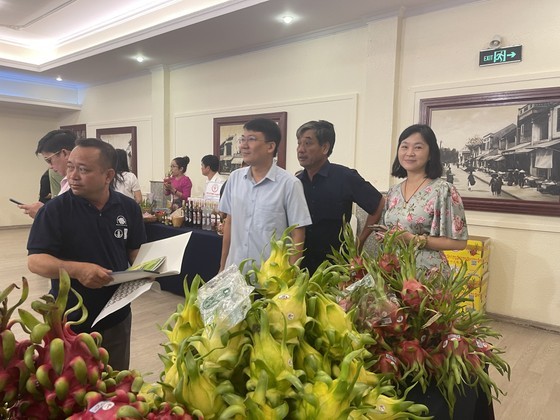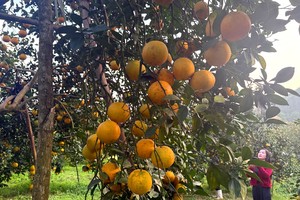 |
Many Vietnamese farmers cultivate dragon fruit with the lowest carbon footprints |
The Ministry of Agriculture and Rural Development in coordination with the United Nations Development Program (UNDP) organized the Conference on Sustainable Dragon Fruit Development in Vietnam to cultivate the fruit with the lowest carbon footprints for climate change response.
According to Deputy Minister of Agriculture and Rural Development Tran Thanh Nam, the cultivation areas for dragon fruit is about 55,000 hectares which produces an output of about 1.3 million tons a year earning an annual export turnover of over US$1 billion; subsequently, the fruit is one of Vietnam's key agriculture products.
Currently, many countries have high requirements for products that must produce reduced emissions and sustainable development. Therefore, the government should have a legal framework for the cultivation of dragon fruit that reduces emissions but ensures quality and enhances brand value.
According to a UNDP representative in Vietnam, the survey results revealed that information on environmental impact can persuade European consumers against carbon-heavy food choices. Therefore, dragon fruit needs to be produced in a way that meets market requirements to achieve a green low–climate impact label.
The largest chunk of food-related greenhouse gases comes from agriculture and land use. This includes other agricultural emissions from manure management, rice cultivation, burning of crop residues, and the use of fuel on farms. Therefore, from 2020 up to now, UNDP has launched the green transformation program to support Vietnam so that dragon fruit becomes a green value chain for many farmers and cooperatives.
As a result, dragon fruit has been produced according to the process of economical irrigation in the face of climate change, and flower lighting uses LED lights to save energy. Notably, many farmers have implemented electronic traceability programs to increase the value of dragon fruit when commercialized in the market and participate in the global value chain.
























